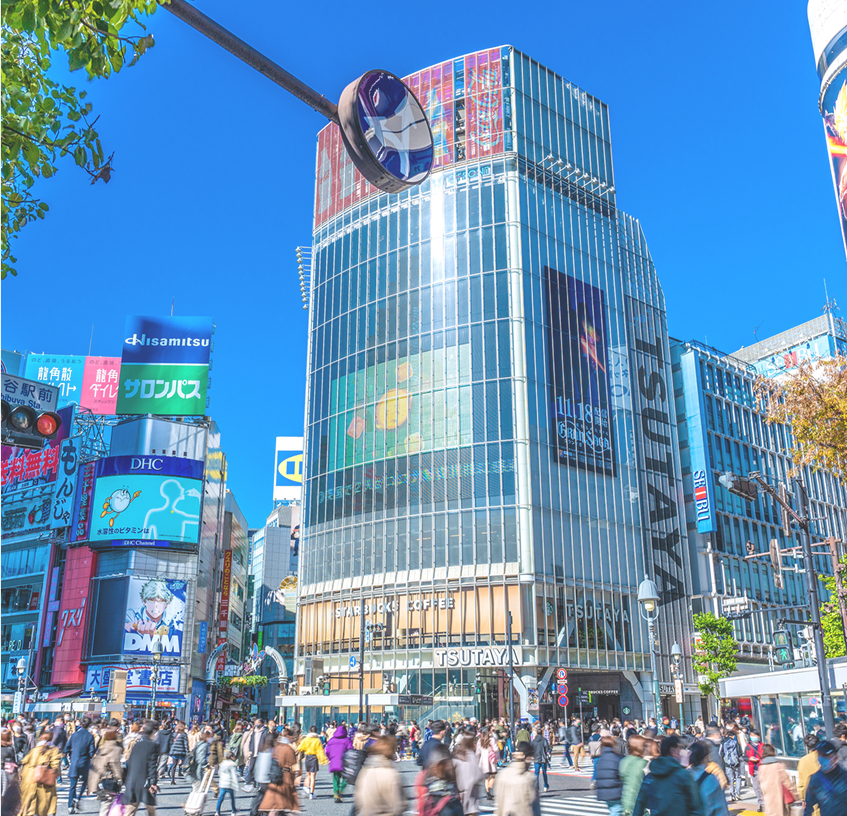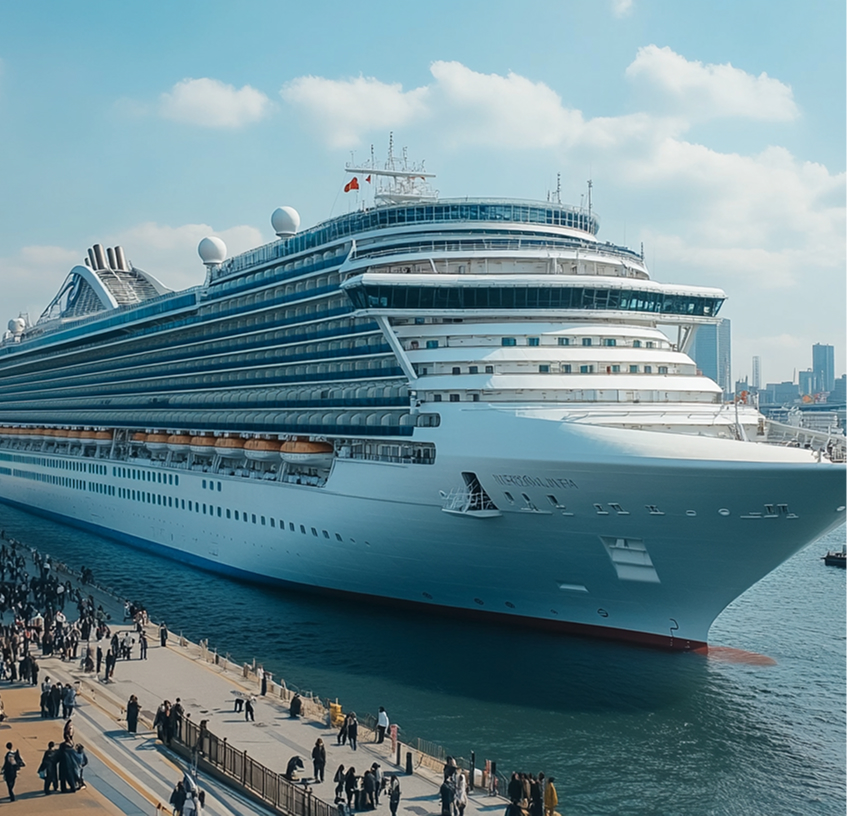Passenger flow planning at cruise terminals, etc.
Improving passenger flow planning at cruise terminals and cargo wharves will enable smoother and more efficient passenger movement. We have a track record in terminal design and extensive knowledge of CIQ (Customs, Immigration, and Quarantine) needs. Therefore, we can utilize this knowledge to propose optimal flow planning. Specifically, we analyze passenger flow, design layouts and guide signage to avoid congestion, and design efficient inspection areas. This will improve passenger convenience and increase the operational efficiency of the entire terminal.
Cruise ship reception and traffic flow plan using cargo wharf
We have carried out many planning projects, such as considering measures for receiving cruise ships at cargo terminals and planning passenger and vehicle flow. We also consider the layout of CIQ, parking lots, and temporary duty-free shops. In particular, we have expertise in measures to avoid affecting logistics activities such as loading and unloading at the quay, and ideas for ensuring passenger safety. We also support the creation of reception plans, including the reception system and staffing on the day.

Installation of a covered passageway for cruise passengers
When accepting cruise ships at a cargo wharf, or when passengers move on foot from the berthing area to the wharf even if there is a passenger terminal, it is effective to install a covered passageway to protect cruise passengers from the wind and rain. There are various types of covered passageway, from a simple type consisting of a row of temporary tents, to an expandable type with an accordion structure, to a type with a clear panel structure that allows you to see the outside from inside the passageway.
In addition to the capacity of the ships to be accepted, the captain, and the location of the boarding and disembarking doors, there are many other things to consider, such as the expected wind speed and the presence or absence of a warehouse when no ships are coming. After conducting a series of such considerations, we will propose a covered passageway that meets the needs of users.

Specifications and layout of onshore power supply facilities
Cruise ships require electricity even while anchored at ports, so they run boilers and emit exhaust gases. For this reason, there is an increasing demand for ports to install facilities that supply electricity from land as an environmentally friendly method. We support the planning and placement of land-based power supply facilities at ports, and attract environmentally conscious shipping companies. We can also conduct interview surveys with shipping companies to understand their needs for using land-based power supply facilities.

Secondary transportation system using small ships
As construction of ultra-large ships exceeding 200,000 gross tons progresses, the number of passengers per ship is also increasing. As a result, an increasing number of ports are facing social issues such as overtourism, such as traffic congestion around ports and urban areas and crowded tourist spots. One way to avoid this is to prevent overtourism by using small boats to access tourist spots from the sea, rather than touring by bus after disembarking. We can plan traffic flow to guide cruise passengers to small ships after disembarking, and consider boarding and disembarking facilities (pedestals, piers, etc.).
Optimizing traffic flow using AI object detection models
The purpose of the traffic flow plan for the cruise terminal is to improve passenger comfort and safety and enable efficient movement. For this plan, an AI object detection model can be used to measure the flow of passengers and congestion within the facility. Based on that data, queue locations and stagnation areas can be identified to help design optimal traffic lines to avoid congestion. Specifically, the AI model detects and tracks the movement of objects such as people and vehicles from images taken by surveillance cameras already installed in the terminal and images taken by separately installed cameras. This allows passenger trends to be analyzed and improvements to the traffic flow to be identified.

Building predictive models using machine learning
We use machine learning models using AI (artificial intelligence) to support the development of marketing and strategies to promote the use of cruise ports. There are two types of machine learning: "supervised" and "unsupervised," but we mainly use "supervised" models. Specifically, we use linear regression and logistic regression to predict future values such as cargo volume. We also use methods such as decision trees and random forests to analyze the characteristics of cargo items that are increasing and shippers who are increasingly using the port, and to understand the strengths and weaknesses of the port. This will help us develop a strategy to accept cruises in the future.
(Reference) Business results
- Commissioned a survey of tourist destinations using SNS data (Kanagawa Prefecture)
- Grasping the amount of spending by cruise pax (National Institute for Land and Infrastructure Management)
- Grasping the economic ripple effects of ports in the Chugoku region (Chugoku Regional Development Bureau, Ministry of Land, Infrastructure, Transport and Tourism)
- Economic ripple effects (Chubu Regional Municipal Affairs Association)
- Examining the economic ripple effects of large cruise ship port calls (Ishinomaki City)
- Economic effects of cruise ship in Japan (National Institute for Land and Infrastructure Management)
- Survey on consumption trends associated with cruise ship calls (Yokohama Port Bureau)
- A mid- to long-term scenario of cruise trends (National Institute for Land and Infrastructure Management)


